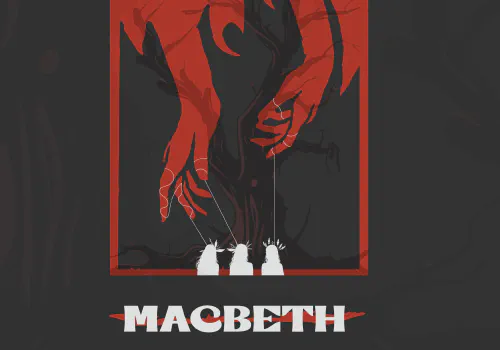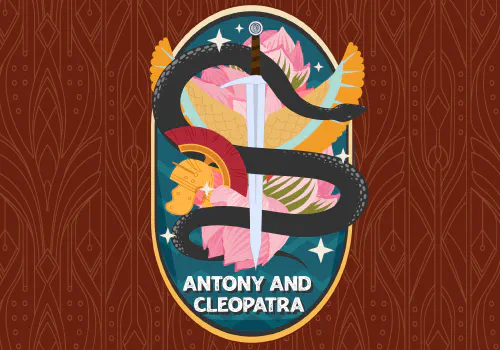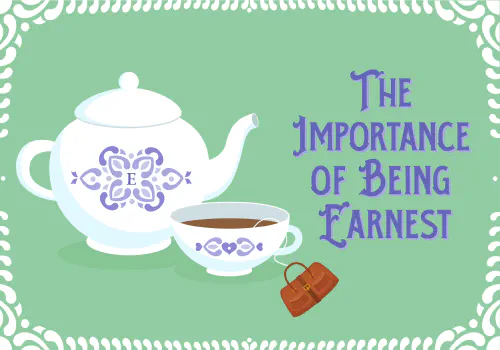By Ace G. Pilkington
In Henry VI Part One, Shakespeare told the story of the loss of Henry V’s empire in France and set up for the next two parts of what was to be the most complex and ambitious project he ever undertook. Many of the same people who had failed to hold France now struggled to keep England in what history has called the Wars of the Roses. William de la Pole, Earl of Suffolk, ended the play with the words, “Margaret shall now be queen, and rule the king:/ But I will rule both her, the king, and realm” (All references to the plays are from The Norton Shakespeare Based on the Oxford Edition [London: Norton, 1997], 5.5.107–108).
In Henry VI Part Two Shakespeare deals with major problems in Henry VI’s reign. This includes not only the struggles among the nobles foreshadowed in the first play, but also the failures of Henry VI, whose inability to take control of the country and dominate the aristocratic factions led inevitably to a breakdown that with the rise of Jack Cade approached perilously close to anarchy. Peter Saccio declares that “the main problem afflicting England in the 1440s was the incompetence of the king” (Shakespeare’s English Kings: History, Chronicle, and Drama [New York: Oxford University Press, 1977], 116). He argues that in the middle ages “the maintenance of general stability, the checking of disputes among magnates, the impartial operation of justice in the courts, the preservation of order among the commons, and a reasonable distribution of the prizes and rewards within the crown’s prerogative all required an active, fairly intelligent, respect-worthy monarch” (116). As we already know from Henry VI Part One, Henry VI does not meet any of those requirements. Saccio calls him “a king of considerable piety, questionable intelligence, little industry in worldly matters, and no political talent” (116). He also suffered from mental instability, though this is one of his flaws that Shakespeare does not explore. Just as Part One ended with the loss of France and the retreat of the English from Henry V’s conquests, Part Two ends with the destruction of order in the kingdom and the rise of Richard, Duke of York, to a position where he will challenge Henry V’s heir for England itself.
In Henry VI Part Three, the consequences of the first two plays work themselves out on the battlefields and in the cities of England. The Duke of York’s sons come to prominence, supporting and betraying each other: George joins the enemy for a time at least, and Richard promises to be a villain in the future, saying that he torments himself “to catch the English crown:/ And from that torment I will free myself,/ Or hew my way out with a bloody axe” (The True Tragedy of Richard Duke of York and the Good King Henry the Sixth, 3.2.179–181) in a clear foreshadowing of the last play in the tetralogy, Richard III. Margaret takes her husband’s place as battle leader, “carving out an individual power base for herself and gathering the reins of power into her own ruthless but capable hands” (John Julius Norwich, Shakespeare’s Kings [London: Viking, 1999], 284). In this she acted as cruelly as any of her enemies. Shakespeare shows the nature of the horrific struggle where family members kill each other, and one brutal murder leads on to many more. The Duke of York is killed, as is Warwick, and eventually, Henry VI’s son and Henry himself. As he is about to die, Clifford places the blame squarely on the king he has supported, “Henry, hadst thou swayed as kings should do/ . . . Giving no ground unto the house of York,/ They never then had sprung like summer flies;/ I and ten thousand in this luckless realm/ Had left no mourning widows for our death” (2.6.14–19).
As usual, Shakespeare has compressed and distorted history to make a dramatic spectacle that will catch and hold an audience’s interest and that can be performed in a reasonable amount of time. He intensifies some conflicts, creates others, adds a love affair, and makes some characters more virtuous while others become more villainous. For example, the love between Suffolk and Margaret is not true, in spite of the poignant lament Shakespeare gives her when she says goodbye to him, “Yet now farewell, and farewell life with thee” (The First Part of the Contention of the Two Famous Houses of York and Lancaster [The Second Part of Henry VI], 3.2.358). Margaret’s conflict with the Duke of Gloucester’s wife is equally false. Margaret did not come to England until four years after the Duke’s wife was convicted of witchcraft and exiled. The Duke of York had nothing to do with Jack Cade’s rebellion, and whatever crimes his son Richard may have committed as king, there is no evidence that he was anything but loyal to Edward IV.
The end result is a version of one of the most complex periods in English history that is inaccurate in its details but surprisingly close to the overall sense of the way things happened and why. Michael Hattaway makes a comment about Henry VI Part Two that applies equally to Part Three, “Its scope is ambitious in that it attends to the large and public concerns of dynastic wars, and yet it is able to uncover, by exposing the very theatricality of those at the centre of the political stage, the most complex web of petty jealousies and private agonies” (“Introduction,” The Second Part of King Henry VI [Cambridge, UK: Cambridge University Press, 1991], 1).
If we stand back and look at it from a distance or, even better, watch it on an actual stage, we reach an understanding of these events that comes very near the truth. I once had an argument with a friend of mine who is a historian about an event in the life of King John. I told him he was wrong, that Shakespeare had said so, but in this instance, the Bard was wrong too. My friend opened up a thick Western Civ. text and pointed to a page that backed him up, and my response was, “Those authors have been caught by Shakespeare as well.” Only after I had piled a stack of more authoritative texts on his desk did he finally concede the mistake. But I understand why he made it and how such mistakes get into print. Shakespeare’s history somehow seems to get closer to the real thing than the most careful catalogue of facts—just as he does with these two remarkable plays.









